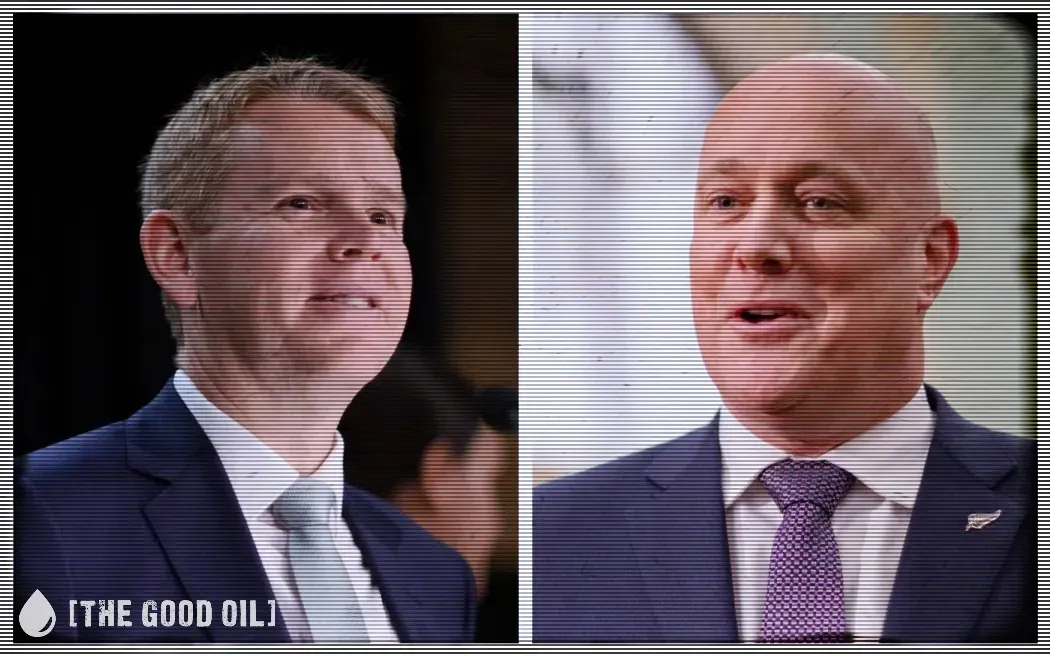Graham Adams
Graham Adams is a freelance editor, journalist and columnist. He lives on Auckland’s North Shore. This post was first published at The Platform.
Last week Newsroom’s political editor, Jo Moir, seemed surprised to discover that co-governance and its various policy manifestations aren’t popular.
On X — the social media site still known to everyone as Twitter — she wrote:
“Exclusive poll! Okay, Newsroom hasn’t entered the poll race, but we do have fascinating new data from Talbot Mills showing more people surveyed opposed Maori wards, co-governance and the Maori Health Authority than supported them.”
Such widespread opposition to co-governance will hardly be news to most of those outside the media bubble. If nothing else, Moir might have noticed that less than four weeks ago a new government was elected made up of three parties which had campaigned on platforms opposing the doctrine of co-governance and some of the policies it has spawned.
The final shakedown last week incorporating special votes showed National, Act and NZ First will have 67 seats in a Parliament of 122 seats (and likely another one after the Port Waikato byelection later this month). You don’t have to be an Einstein to work out that their common opposition to co-governance — including repealing Three Waters and decommissioning the M?ori Health Authority — was a significant factor in their convincing win.
The mainstream media has done its very best for years to avoid serious analysis of co-governance even as independent outlets have repeatedly dissected its manifestations in policy and law. The most vital lesson for a journalist to take from the Talbot Mills data should really be that they have failed miserably, despite their efforts, to convince many voters co-governance is fair, equitable and democratic.
Moir is not alone, of course, among mainstream media journalists who happen to stumble across well-known truths belatedly — or even accidentally. Late last month, Newstalk ZB’s Mike Hosking read out part of a column by political commentator Chris Trotter that referred to the eligibility criteria governing access to the $55 million Public Interest Journalism Fund. The requirements to access the cash included presenting the Treaty as a “partnership”.
Some of Hosking’s audience seemed shocked to discover that PIJF cash had strings attached regarding the Treaty. As one listener tweeted:
“Did I hear Hosking right this morning? As a condition of the $55 million journo fund being paid… they had to sign up to a new interpretation of the Treaty of Waitangi? Please tell me I got this wrong so I can delete this tweet!”
This bewildered cry for help was answered quickly by more than a hundred tweeters, many of whom confidently pointed out the Treaty criteria in the PIJF guidelines, and even referenced NZ On Air’s follow-up guide, “Te Tiriti Framework for News Media”, which makes the criteria for state cash even more explicit. In fact, alarmingly so, given that its radical guidelines insist that Maori “never ceded sovereignty to Britain or any other state” and “our society has a foundation of institutional racism”.
Commenters repeatedly noted they had heard the news on The Platform, which has covered this topic extensively for more than a year. Unlike Hosking’s listeners, no one who regularly tunes into The Platform would have been surprised by the link between the PIJF and coverage of the Treaty. Nor, for that matter, would any of those who regularly read other independent media sites, including the NZ Centre for Political Research, The BFD, Point of Order, the Democracy Project, The Common Room, and Bassett, Brash and Hide.
Of course, it is the MSM’s compromised position on that subject — and its unwillingness to tackle many other contentious topics in-depth, including trans issues and climate change — that has fuelled the boom in independent media over the past two years in particular. The various independent sites act as an informal collective, in which articles published by one are often republished by the others for free, which means a column on any topic can find a large readership overall that rivals the reach of much of the legacy media’s output (especially if its articles have been hidden behind a paywall).
The mainstream media is being increasingly forced to acknowledge the power of the nation’s samizdat media as more people turn to it for news and analysis that is not constrained by having accepted the government’s 30 pieces of silver in exchange for a prescribed view of the Treaty.
For the record, NZME, which owns the Newstalk ZB stable, topped the list of PIJF recipients. In June, the Taxpayers’ Union calculated it had received a total of $6,880,099 in public money (including “$635,020 in indirect funding”). As far as is known, NZME did not baulk at the requirement to endorse the interpretation of the Treaty as a partnership.
There is also the problem of allegiance to Rainbow Tick, whose activists have a chokehold on coverage of issues concerning transgenderism. It should be unthinkable that two of the nation’s biggest media outlets — NZME and MediaWorks — would appear on the list of “certified organisations” voluntarily subjecting themselves to its influence but there they are.
The question now is whether a change of government will open wider the window of acceptable discourse — and writers — among the legacy media.
Last week, the NZ Herald’s Audrey Young quoted Muriel Newman’s excellent analysis of a controversial Court of Appeal decision that will lower the test for iwi to be awarded customary title in parts of coastal New Zealand. Newman’s column also appeared on ZB Plus in full — although it was sequestered behind a paywall despite being available for free on the website for the NZ Centre for Political Research that Newman has run since 2005.
What’s interesting is that Newman has pretty much been persona non grata at NZME during the term of the Ardern-Hipkins government but her rehabilitation appears to be now under way.
Wags are debating who might also be rehabilitated by the commissars at the Herald’s Politburo as the winds of political change whistle up their trouser legs.
Historian Dr Michael Bassett — CNZM, QSO, former Labour Cabinet minister and member of the Waitangi Tribunal for a decade — seems an unlikely candidate for redemption given he was issued with a lifetime ban in 2021 in a farcical process that would have delighted the Monty Python crew.
The cause for the learned Dr Bassett’s permanent dismissal from all NZME platforms was a column that editors at both the Northland Age and the NZ Herald’s own website deemed fit to publish and then decided belatedly it wasn’t after it had been denounced by someone who threatened to take a complaint to the Press Council.
The column, titled “Racism on a Grand Scale”, was expunged from the electronic record — ironically after it was alleged to be “racist”. Bassett had — among many sins — criticised the “bizarre craze” of media adopting Maori language words and phrases such as “Aotearoa” to refer to New Zealand.
What was truly weird about the cancellation was that Bassett had been asked by the editor of the Northland Age — owned by NZME — if he could publish the column, which had appeared earlier on Bassett’s own blog.
Bassett said he had readily agreed but the next he heard about the column was when a Herald editor sent him “a terse note telling me that my column ‘didn’t meet NZME’s standards, shouldn’t have been published’, and had been removed”.
The editor added: “I also wanted to let you know that NZME won’t be publishing any more of your columns.”
Bassett said at the time that he didn’t even know the column had been republished on the Herald website. So he was banned from an entire media group after one regional publication had specifically requested his column before the flagship paper, unbeknown to him, happily republished the same column and then insisted it didn’t meet their standards and threw him out — with a lifetime ban to boot.
In a final bizarre twist to a bizarre tale, the Herald then published a letter attacking him but, as Bassett noted, “The website now carried an attack on me for reasons that no reader would be able to work out since my column had been removed.”
More than two years later, this tragi-comic incident still epitomises much that has gone wrong with the legacy media — including editors running scared before any mob that might accuse them of racism or transphobia, as well as what appears to be labyrinthine chains of command where no one seems to have a good grip on what their staff are doing (hello, RNZ, and their “rogue” subeditor altering supplied wire copy).
This systemic disarray has been a gift to independent media. And no recent incident has made their consequent rise more apparent than the fact Winston Peters’ only media interview in the wake of the results of the special votes last week was with Sean Plunket.
In the absence of their own scoop, the mainstream media ended up quoting from that interview — and could not plausibly avoid mentioning The Platform by name, even though they have often, as a matter of policy, only referred to competitors by a general reference to “another media outlet”.
TVNZ recently referred to The Platform as a “fringe online radio station”. Yet when 1News tried to put questions to Winston Peters at the Auckland Diwali Festival last weekend, he made it very clear he wouldn’t be talking to its reporters. He repeatedly told 1News to “take the camera away” when approached with questions.
“Nobody ignores me for a whole campaign and gets to talk to me after it,” said Peters.
Who’s on the fringe, now?









